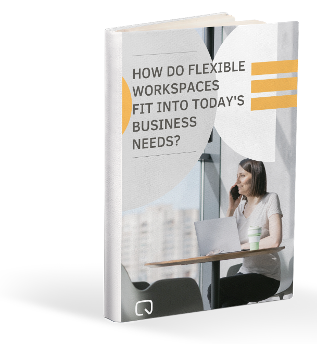For many people, working from home means spending a lot of time on video meeting apps such as Zoom. Although Zoom makes meetings more productive and convenient for employees in different locations, recent studies show that the mental and emotional costs employees experience from Zoom or video call meetings are more significant than in-person meetings.
With hybrid work becoming the new norm in most organizations, switching to co-working spaces like Quest Workspaces provides more value, especially if your business has a lot of internal or client-facing meetings. This blog provides reasons to opt for private meeting rooms in a co-working space over video call meetings.
Meeting Rooms vs. Zoom Meetings: The importance of face-to-face meetings.
Meeting in person is not all about the exchange of knowledge. There are several aspects involved with a face-to-face meeting that provide comfort and put people to ease while building and maintaining essential rapport. Studies show face to face meetings are crucial mechanisms for communicating attitudes and feelings among colleagues, partners, and clients. With Zoom meetings, we are forced to process too much information unconsciously, yet our brains are made to handle only a few things consciously at once. Because online meetings increase cognitive loads, it triggers fatigue and stressful experiences.
Zoom fatigue: What causes mental exhaustion with Zoom meetings?
According to Stanford researchers, popular video chat platforms such as Zoom have design errors that exhaust the human mind and body. The following are some of the reasons Zoom meetings fatigue the human mind:
A lot of non-verbal communication is lost
We usually convey our feelings and attitude via non-verbal signals, including facial expressions, posture, tone, gestures, and pitch. During face-to-face meetings, our brains process these cues automatically while we are listening to the speaker at the same time. Similarly, in face-to-face meetings, we leverage non-verbal cues to process the message and make an emotional judgment. However, in Zoom meetings, you have to work extra hard to interpret non-verbal cues. Paying a lot more attention to what others are saying tends to be tiring and stressful.
Too much close-up eye contact
Researchers established that both the amount of eye contact we engage in on Zoom and the size of faces on the screen are unnatural. In an in-person meeting, people alternate looking at the speaker, taking notes, and looking elsewhere. But in Zoom meetings, all focus is on another person all the time, increasing the amount of eye contact dramatically. This usually triggers social anxiety related to public speaking. Many respondents say they experience a stressful experience when everyone else is staring at them during Zoom meetings. Another source of stress is that faces on video conferencing calls appear too large for comfort. Ideally, you see another person's face at a size that simulates the personal space you normally experience when you are intimate with somebody else. When someone's face is too close to yours, your brain interprets it as an intense situation likely to lead to conflict or mating, which naturally is very discomforting.
Reduces usual mobility dramatically
In-person conversations allow employees to walk around and move. But when you are zooming, cameras typically have a set field of view, meaning you have to stay in the same spot for the entire period of the meeting, unnaturally limiting mobility while increasing exhaustion. Recent research reveals that when people keep moving, they perform better cognitively than when they stay immobile.
Too much cognitive load
The cognitive load is way higher in video chats than in in-person meetings. In regular face-to-face meetings, non-verbal communication is critical in helping send the message home. Members get opportunities to naturally make and interpret gestures and non-verbal cues subconsciously, making meetings seamless and easy. But in video chats, members have to work extra harder to send and receive signals. This usually adds cognitive loads since you are using a lot of mental calories to communicate.
Looking at our own faces is stressful
The increased emphasis on facial cues may also act as a stressor. Studies show viewing your own negative facial expressions, such as disgust or anger, could raise intense emotions compared to the time you view similar facial expressions in others.
Increase your productivity with Quest Workspaces meeting rooms
Even as more people leverage video chat platforms to connect with colleagues and clients, researchers have a warning for you. Those video calls are likely to tire you out by depleting physiological and cognitive resources in your brain. The alternative is to switch to meeting rooms provided by co-working spaces like Quest Workspaces. Quest workspaces are equipped and designed to help increase your productivity while kicking out fatigue no matter how long a meeting takes. Contact us today to learn more.
Employees say they don't want to work from home full-time, nor do they want to commute to an office five days a week.
A flexible workspace saves business owners the cost and responsibility of a long-term office space lease.
Employees still have a designated work area as desired and as needed.



